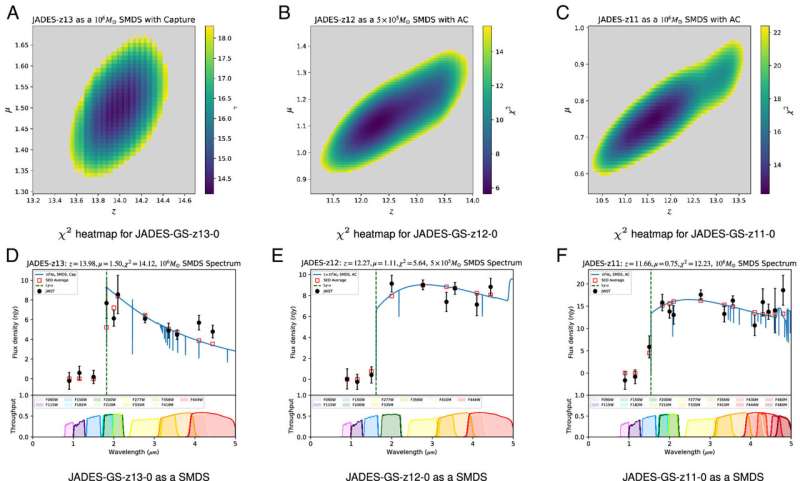July 13, 2023 report
This article has been reviewed according to Science X's editorial process and policies. Editors have highlighted the following attributes while ensuring the content's credibility:
fact-checked
peer-reviewed publication
trusted source
proofread
James Webb Space Telescope finds possible evidence of dark stars

A trio of astrophysicists, two from Colgate University and the third from the University of Texas, has found evidence of dark stars courtesy of data from the James Webb Space Telescope. In their study, reported in Proceedings of the National Academy of Sciences, Cosmin Ilie, Jillian Paulin and Katherine Freese, analyzed three galaxies spotted by the JWST and how they might relate to dark stars.
Back in 2007, Freese, along with Douglas Spolyar and Paolo Gondolo, proposed the idea of a dark star—rather than nuclear fusion, these theorized dark stars are powered by dark matter. Since that time, researchers have continued to study the idea of such a star, built models to show what they might look like and derived a list of characteristics that such a star might have. In the current study, Ilie, Paulin and Freese have found three candidates in Webb data that fit the bill.
Dark stars, the team suggests, likely could have been born during the early days of the universe—like other stars, they would have been made mostly of helium and hydrogen. But they would also contain dark matter—enough to provide a heat source. Such stars would not then be lit by nuclear fusion. If such stars did exist, they would be much larger than other types of stars that have been observed—so large that they might look like galaxies from Earth-based telescopes.
The dark star candidates they examined, JADES-GS-z11, z12 and z13-0, conformed strongly to the characteristics they described for dark stars, adding credence to their theory. Also helping to bolster their theory is that the three dark star candidates do not fit with theory surrounding traditional galaxies.
Another part of the theory the team developed suggested that as dark stars age, they eventually collapse down to supermassive black holes, explaining why there are so many black holes in the universe. It would also explain why dark stars have not previously been observed—astronomers lacked the tools necessary to see far enough back in time until the deployment of the JWST.
More information: Cosmin Ilie et al, Supermassive Dark Star candidates seen by JWST, Proceedings of the National Academy of Sciences (2023). DOI: 10.1073/pnas.2305762120
Journal information: Proceedings of the National Academy of Sciences
© 2023 Science X Network





















